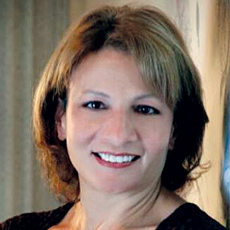
Celebrate the demise of RCS-1. It is widely accepted that RCS-1 would have been the downfall of the SNF, would leave our seniors sicker, shorten their lives, and provide an unmanageable system for payment. People who spent 40-plus years paying into their Medicare/Social Security would see little to no benefit when they needed it.
Should we also celebrate the onset of the new Patient Driven Payment Model? It depends.
PDPM will be instituted on October 1, 2019, which is less than a year away. We need to be ready, but it appears we don’t need to be scared. This newer payment model is gentler and more Patient-Driven (hence the name) and focuses on the patient’s needs.
With the PPS system of RUGs that we’ve used since the LAST CENTURY, rehab was the driver. More minutes = higher payment. What’s the result? Abuse of the system by creating an entire caseload of Rehab-Ultras who stayed too long, finally got the attention of those who make these laws. Over the years, as a Regional Manager of state-wide and then national companies, it was my imperative to make the therapist go back overandoverandover until that patient got those assigned minutes.
When I’d push corporate and ask why we were over-providing 720 minutes for the patient who was two days from being hospice-appropriate, I was told that my job depended on the profit accrued by my buildings.
I’d hear, “Jean, your buildings need to make at least $30,000 profit this month or we’re going to have to lay off some of your more experienced therapists and hire some new grads [they’re cheaper.]” Little wonder I kept looking for the position that would provide therapy based on the patient’s needs, and found it.
What goes into PDPM? It’s not just therapy anymore. There are six new components: PT, OT, ST, nursing, non-therapy ancillaries (e.g. IVs, trach care, HIV, TPN, transplant, etc.), and all of that is built on the default Non-Case-Mix Base rate. Over the course of the patient’s stay, each therapy discipline is reported by start/end dates, and total treatment DAYS, not MINUTES. The rehab classifications will be based on the type of diagnosis, with Orthopedic, Medical Management, Non-orthopedic surgery, acute neurologic having their own scores. Nursing classification will be based on the diagnosis with Trach/vent, severity of condition, and ADLs driving the mix.
Further, PT and OT payments will decrease over time by 2% every seven days past Day 20. ST does not decrease, and neither does nursing.
Theoretically, from the standpoint of CMS, PDPM will be budget-neutral. Revenue will decrease for therapy cases, but will increase for the clinically complex cases. So facilities that currently bill lower RUs, will see a 27% increase in payment. Facilities that currently bill higher percentages of RUs will see a 10% decrease in payment. PDPM shifts the higher payments to those patients who are sicker and have higher clinical needs.
The important point to make to ensure that you’re able to care for your patients and get paid for what you do, is to determine the primary reason for the SNF. Diagnosis-gathering has never been so important. The accuracy of the MDS will be your driver, and it’s important to educate those nurses now.
If you’re one of those buildings that have 95% of all skilled patients in the RU category, PDPM will hurt. If you’re a building that provides skilled care and therapy based on the needs of the patient, PDPM will improve your profit. If we all do the right thing for our patients, the money will follow and we will not only survive, we may even flourish.
Jean Wendland Porter, PT, CCI, WCC, CKTP, CDP, TWD is the Regional Director of Therapy Operations at Diversified Health Partners in Ohio.





